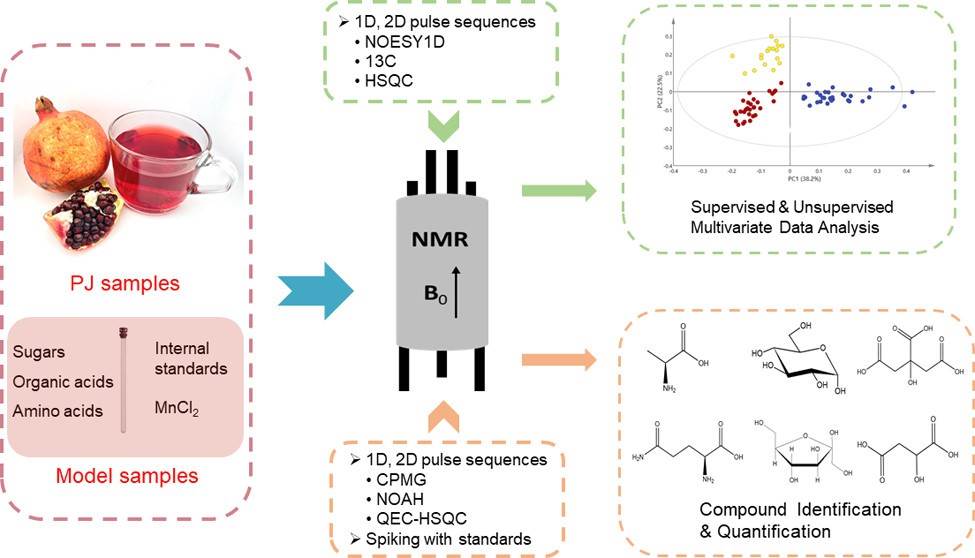NMR-based Juice Analysis
Quality control is a continuing challenge for juice developers and producers, involving pollution and fraud, such as mislabeling of product types or ingredient types and sources. The combination of NMR spectrum and statistical multi-parameter analysis technology is an extremely universal tool to meet these challenges.
As an expert in the field of nuclear magnetic resonance, Creative Biostructure relies on our MagHelix™ The NMR platform provides juice analysis services for customers.
 Figure 1. NMR-based juice analysis (Tang & Hatzakis, 2020)
Figure 1. NMR-based juice analysis (Tang & Hatzakis, 2020)
Service Content
Targeted analysis. Simultaneous absolute quantification of relevant organic compounds concerning AIJN and NMR distribution.
Non-targeted analysis. Compare the NMR spectrum with the corresponding reference spectrum group.
Automatic detection of concentration deviation (even for unidentified compounds).
Classification analysis, such as determination of fruit origin.
Determination of fruit content (detection of added water, amino acid or sugar).
Composition and Concentration Analysis (Targeted Analysis) of Juice Sample
Specific deviation of specific compound concentration or specific compound combination characteristics may indicate the quality and authenticity of characteristics. Therefore, our main interest in the classical juice evaluation procedure is the concentration of various ingredients. Targeting methods provide recognition and quantification of individual compounds.
Our MagHelix™ platform can test the absolute concentration of various compounds in fruit juice samples, including sucrose, glucose, fructose, proline, alanine, 5-hydroxymethylfurfural (HMF), ethanol, methanol, acetone, phlorin, acetaldehyde, benzaldehyde, acetoine, arbutine and the acids malic, citric, isocitric, chlorogenic, lactic, fumaric, quinic, succinic, citramalic, formic, benzoic, acetic, sorbic, gluconic and galacturonic.
A large number of analytical results from one measurement can easily detect fraud, such as the addition of sugar, thorough enzyme treatment (marker: galacturonic acid), addition of citric acid or lemon juice (for example, in apple juice), extraction of orange peel or use of immature fruit (for example, high concentration of quinic acid in apple juice).
Statistical Analysis (Non-Targeted) of Juice Sample
We apply a series of statistical tests and classification and discrimination steps to scan multiple aspects of sample quality.
Step 1. Estimate the type of fruit. Our platform can distinguish 20 kinds of fruits, namely apple, orange/orange, sour cherry, pineapple, blackcurrant, passionfruit, lemon, grapefruit, banana, peach, raspberry, strawberry, pear, apricot, mango, guava, carrot, elderberry, pomegranate and grape.
Step 2. Detect the source of fruit.
Step 3. After determining the most likely group assignment, verify the sample. Univariate analysis compares each spectral region of interest with the reference data set and detects the deviation of compound concentration.
Creative Biostructure is committed to providing high-quality NMR analysis services to advance the life sciences fields. If you have any questions or needs, please contact us and our customer service staff will help you the first time.
Ordering Process
Reference
- Tang F, Hatzakis E. NMR-Based analysis of pomegranate juice using untargeted metabolomics coupled with nested and quantitative approaches. Analytical Chemistry. 2020, 92(16): 11177-11185.

